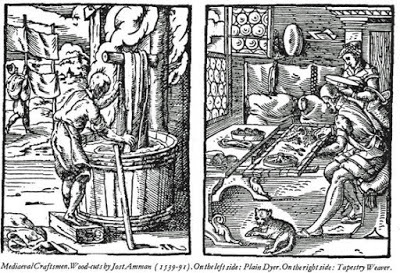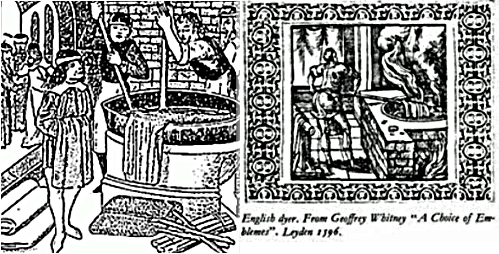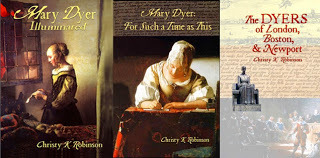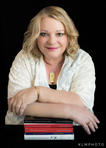Where did the DYER name come from?
© 2016 Christy K Robinson

Surnames (also called family names) were adopted in the 1200s and 1300s and people took their names from places, trades or professions, the head of the family or clan, and personal characteristics.
Some occupational names we recognize today are Tyler (made ceramic or clay tiles), Cartwright (built wagons), Carter (transported goods by wagon), Carpenter (built houses, churches, ships, and furniture), Mason (stone builder), Taylor (sewed clothing), Hooper (made barrel stays), Smith (blacksmith or metal worker), and many others.
The Dyer name is not a rare one, and can't be traced back to one progenitor with many descendants. The name was one applied to a tradesman who dyed wool and cloth, which was a huge industry in Britain for hundreds of years.
 15th century wool dyer and tapestry weaver.
15th century wool dyer and tapestry weaver.
(Yay for cats!)
See below for more images of dyers.
Robert le Deyare is registered in the 1275 Subsidy Rolls of Worcestershire; Alexander Dyghere is listed in the 1296 Subsidy Rolls of Sussex; and Henry le Dyer is noted in the 1327 Subsidy Rolls of Derbyshire. Bryan Dyer and Wenefrid Ketton were married on June 3rd 1583, at Enfield, London, and the marriage of Thomas Dyer and Margaret Gibson took place at St. Mary at Hill, London, on August 27th 1593. In March 1634, John Dyer, aged 28 yrs., departed from the Port of London, aboard the "Christian" bound for New England. He was one of the earliest of the namebearers in the New World. Notice from that quotation above, that "our" William Dyer wasn't the only Dyer to emigrate to New England. Nor was he the only William Dyer, for there were a William and Mary Dyer in Sheepscot, Maine, who were not the same as our William and Mary Barrett Dyer of Boston, Portsmouth, and Newport.
William Dyer (who actually spelled his name "Dyre,") was born on his parents' farm in Kirkby LaThorpe, Lincolnshire, in September 1609. But his father, also a William Dyer, didn't have roots there. Many genealogists and researchers believe (but haven't proved) the father came from Somerset, a county in the southwest of England, near Bristol.
Concentration of Dyer name in the United Kingdom. Notice the high incidence of the Dyer surname in Somerset County, in southwest Britain. The Somerset Dyers, who are more likely to be related to us than the other "hot" areas around England, may be our cousins 12 times removed.
Another surname site,
 Florentine dyers in 1458 Italy.
Florentine dyers in 1458 Italy.
 Left image: medieval English textile dyer.
Left image: medieval English textile dyer.
Right image: English dyers, published in a 1596 book in Leyden, Netherlands (the destination of the English Pilgrims between 1610 and 1620, when many of them emigrated to Plymouth, Mass., on the Mayflower.
 Christy K Robinson is the author of five books: We Shall Be Changed (2010) Mary Dyer Illuminated (2013)Mary Dyer: For Such a Time as This (2014)The Dyers of London, Boston, & Newport (2014) Effigy Hunter (2015)
Christy K Robinson is the author of five books: We Shall Be Changed (2010) Mary Dyer Illuminated (2013)Mary Dyer: For Such a Time as This (2014)The Dyers of London, Boston, & Newport (2014) Effigy Hunter (2015)

Surnames (also called family names) were adopted in the 1200s and 1300s and people took their names from places, trades or professions, the head of the family or clan, and personal characteristics.
Some occupational names we recognize today are Tyler (made ceramic or clay tiles), Cartwright (built wagons), Carter (transported goods by wagon), Carpenter (built houses, churches, ships, and furniture), Mason (stone builder), Taylor (sewed clothing), Hooper (made barrel stays), Smith (blacksmith or metal worker), and many others.
The Dyer name is not a rare one, and can't be traced back to one progenitor with many descendants. The name was one applied to a tradesman who dyed wool and cloth, which was a huge industry in Britain for hundreds of years.
 15th century wool dyer and tapestry weaver.
15th century wool dyer and tapestry weaver. (Yay for cats!)
See below for more images of dyers.
Robert le Deyare is registered in the 1275 Subsidy Rolls of Worcestershire; Alexander Dyghere is listed in the 1296 Subsidy Rolls of Sussex; and Henry le Dyer is noted in the 1327 Subsidy Rolls of Derbyshire. Bryan Dyer and Wenefrid Ketton were married on June 3rd 1583, at Enfield, London, and the marriage of Thomas Dyer and Margaret Gibson took place at St. Mary at Hill, London, on August 27th 1593. In March 1634, John Dyer, aged 28 yrs., departed from the Port of London, aboard the "Christian" bound for New England. He was one of the earliest of the namebearers in the New World. Notice from that quotation above, that "our" William Dyer wasn't the only Dyer to emigrate to New England. Nor was he the only William Dyer, for there were a William and Mary Dyer in Sheepscot, Maine, who were not the same as our William and Mary Barrett Dyer of Boston, Portsmouth, and Newport.
William Dyer (who actually spelled his name "Dyre,") was born on his parents' farm in Kirkby LaThorpe, Lincolnshire, in September 1609. But his father, also a William Dyer, didn't have roots there. Many genealogists and researchers believe (but haven't proved) the father came from Somerset, a county in the southwest of England, near Bristol.
Concentration of Dyer name in the United Kingdom. Notice the high incidence of the Dyer surname in Somerset County, in southwest Britain. The Somerset Dyers, who are more likely to be related to us than the other "hot" areas around England, may be our cousins 12 times removed.
Another surname site,
 Florentine dyers in 1458 Italy.
Florentine dyers in 1458 Italy. Left image: medieval English textile dyer.
Left image: medieval English textile dyer. Right image: English dyers, published in a 1596 book in Leyden, Netherlands (the destination of the English Pilgrims between 1610 and 1620, when many of them emigrated to Plymouth, Mass., on the Mayflower.
 Christy K Robinson is the author of five books: We Shall Be Changed (2010) Mary Dyer Illuminated (2013)Mary Dyer: For Such a Time as This (2014)The Dyers of London, Boston, & Newport (2014) Effigy Hunter (2015)
Christy K Robinson is the author of five books: We Shall Be Changed (2010) Mary Dyer Illuminated (2013)Mary Dyer: For Such a Time as This (2014)The Dyers of London, Boston, & Newport (2014) Effigy Hunter (2015)
Published on February 24, 2016 18:35
No comments have been added yet.



